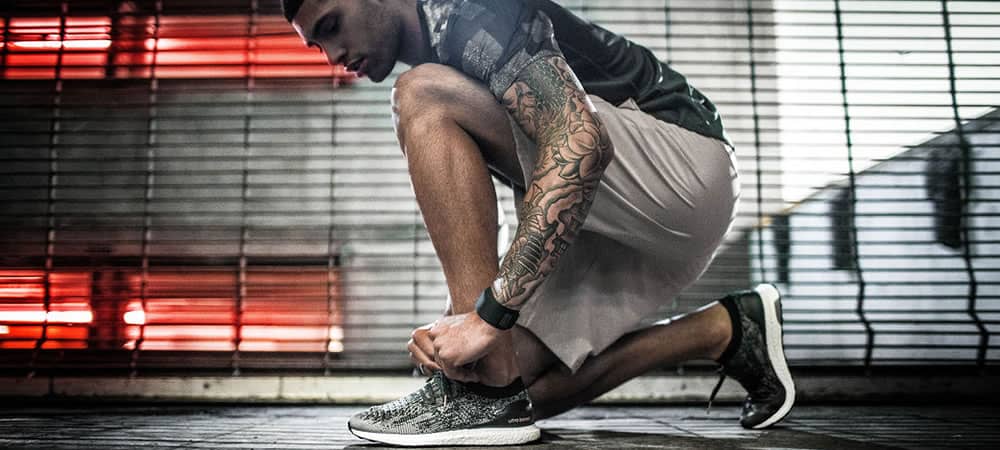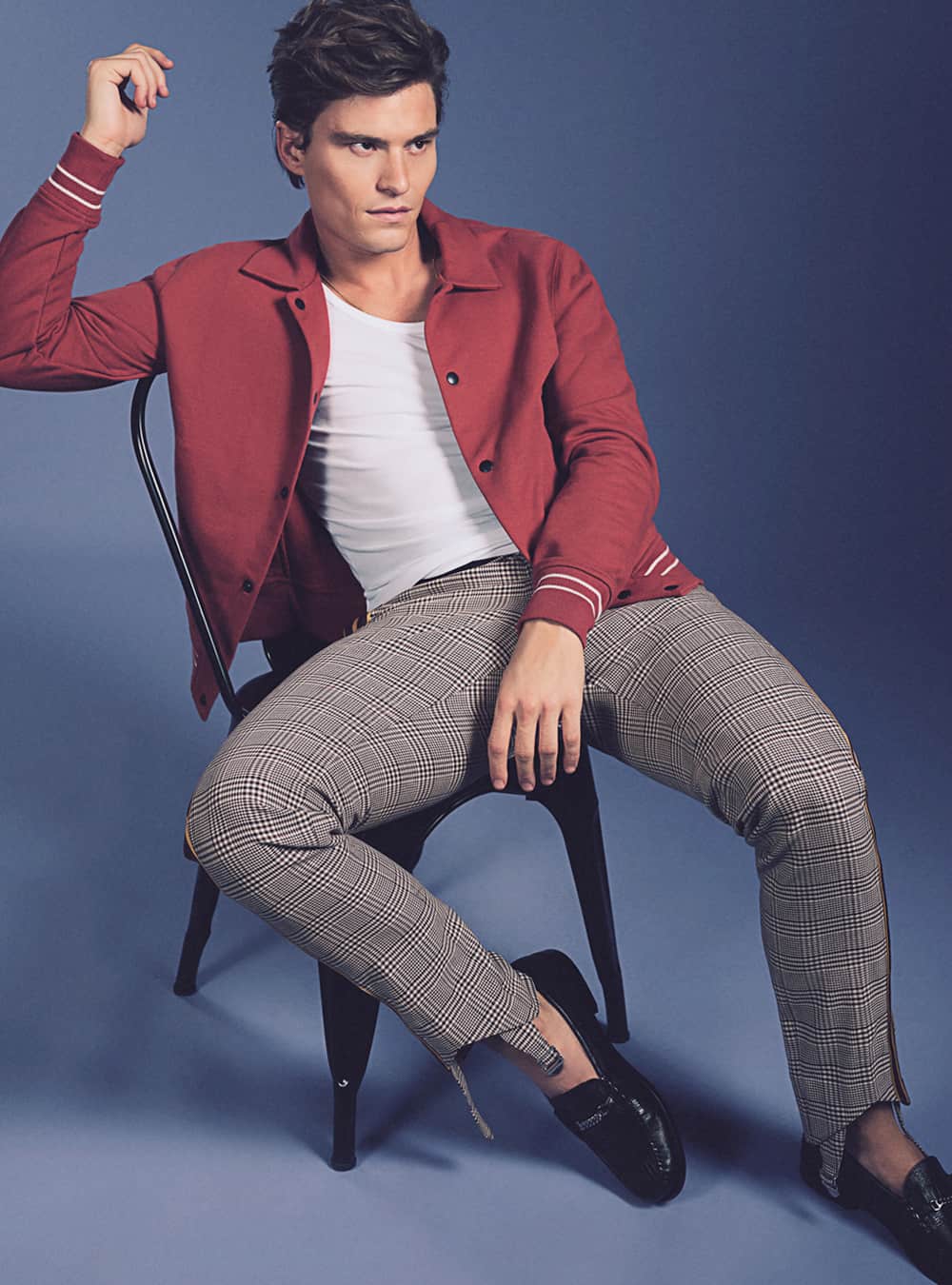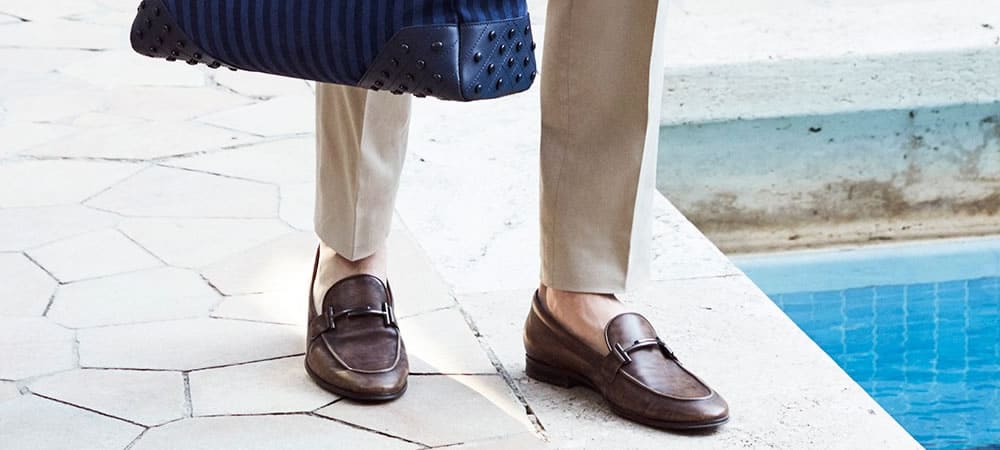
Whether your sights are set on a marathon, the local parkrun, or just getting around the block without leaving your lunch on the pavement, if you’re running, you need specialist running shoes. Unlike those dusty Dunlops buried in the loft, run-specific footwear will ensure the miles are easier, faster and more comfortable, and may even help you sidestep injury.
“You need to ensure the shoe you’re buying is designed with the specific technology for distance running,” says Becs Gentry, Nike+ Run Club Coach and ultra-marathoner.
“This is paramount,” concurs Paul Hobrough, a physiotherapist specialising in running biomechanics with clinics in Harley Street, London and Northumberland. “Just as the foundations of a house need to be of a specific support to prevent damage, the running shoe needs to balance support and cushioning.”
Fortunately, it’s a great time to be dipping a toe into runners. We’re benefiting from a golden period of innovation, with brands investing heavily in R&D and thinking outside the box in design. New midsole foams are pushing the envelope on cushioning and energy return, carbon footplates propel us forward and woven uppers with anatomically zoned tension cradle our feet like never before.
And there’s style to go with the substance. While retro runners are feeling the love from discerning sneakerheads, new high-performance models are emerging as out-of-the box style classics. But with so many running shoes out there, with such variety in design and performance features, finding the perfect match for your specific needs and preferences can be daunting. Which is why we’ve distilled everything you need to know right here.
What Kind Of Running Shoes Do You Need?
To get the most from your running, it’s not enough that your shoes are simply run-specific, they need to be right specifically for you as a runner. “It’s critical to find the right shoe for you,” says Jane Vongvorachoti, Olympic marathoner and running coach. “Don’t buy a shoe just because it is ‘in’ or you see some top runners wearing them.”
Your Body Type
There are many factors to consider in finding that perfect sole mate. Start with your size and weight. The bigger and heavier you are, generally the more cushioning you will need in a shoe to absorb the greater impact forces as your feet hit the floor. Look for models with thicker midsoles that trumpet their cushioning properties.
But then, as in many areas of life, size isn’t everything: “Your size and weight are a factor in the cushioning needed from the shoe, however it’s not always a necessity that a heavier runner needs a more cushioned shoe if they run well,” says Gentry. Which leads us into your biomechanics, AKA gait or form, the highly nuanced and complex way that your body performs the seemingly simple act of placing one foot in front of the other.
Your Biomechanics
“We’re all so different biomechanically, so it’s not a case of, ‘Mo Farah wears that shoe so I’m going to get it too’,” says Gentry. As a rule of thumb, the more you run, the more efficient and problem-free your running biomechanics should be; so experienced runners can look for more stripped-down shoes with less cushioning, support and stability features. With your biomechanics as unique to you as your fingerprint, though, things can get more complex.
“It’s important to consider your running gait and how you land to have support in the right part of your feet,” says Vongvorachoti. There’s a long history in the running world of trying to match shoes to runners’ individual biomechanics to boost comfort and performance and, crucially, reduce injury risk. The now discredited wet footprint test has been replaced by more sophisticated treadmill running gait analysis on offer at specialist running stores, and many believe in the value of this. “If you’re interested in knowing the mechanics of how you run then it can be a great experience,” says Gentry.
Yet in-store gait analysis isn’t foolproof and if you’re really serious you could go deeper: “Running shops that specialise and have experienced staff can be excellent, but finding the right shoe for your biomechanics is sometimes a dark art,” says Hobrough. “A running-specialist physiotherapist will assess the whole body and gaining that extra information before your investment can be very important.”
Pronation Control
A focus of any biomechanical analysis is pronation – the degree to which your knee rolls inwards after your foot hits the ground with each stride. If you over-pronate, which has traditionally been linked to a host of injuries, stability or motion control shoes contain technology to counteract this, building up under the arch with tech like medial posts or internal wedges to limit that inward roll.
These shoes are less common and less extreme then they used to be, and some experts now question both the connection between pronation and injury, and the effectiveness of pronation control in running shoes. “I am not an advocate of too much support from the shoe,” says Hobrough. “If you need specialist support, then a bespoke insole is the way to go.”
Still, the consensus is that some over-pronaters can benefit from a shoe with stability features. Just don’t expect any shoe to magically change your running style or immunise you from injuries. “Biomechanics faults aren’t corrected by a shoe,” says Gentry. “That’s something solved by rehab work and focused movements prescribed by a qualified practitioner.”
Comfort
If you feel you’re disappearing down the biomechanics rabbit hole here, you’ll be glad to hear that there may be a far simpler solution. Recent research by highly respected running form boffin Professor Benno Nigg, director of the Human Performance Lab at the University of Calgary, suggests that when choosing running shoes, your body knows best. His studies found the shoes runners chose purely on the basis of feeling most comfortable were also the most efficient in terms of running performance and reducing injury. It’s scientific validation for the hard-run wisdom generations of experienced runners would pass on.
“Comfort is key,” says Gentry. “A runner should be putting their trainers on and feeling like they’re an extension of their body. The shoes should hold and support where you want or need them to, they shouldn’t rub anywhere and they should feel like they are giving you a little bit of energy return with every step, not rigid underfoot.”
Consider whether they support your arch in the right place; ensure they don’t slide off your heel, but do move with your foot rather than pushing it in a different direction, and are roomy enough that you don’t bang your toes at the front. On that note, always buy running shoes half a size up from your everyday shoes. This will save you many a blackened toenail.
Rotation System
As you get more into your running, you should consider adding different types of shoe to your ‘quiver’. In addition to steady-paced plods, your training will begin to include shorter, faster sessions and races. And different shoe types suit these different types of run. “I think it’s a good idea to have at least a couple of pairs of shoes,” says Gentry. “I wear the lighter, more responsive Nike Epic React for speed workouts and more cushioned and supportive Zoom Pegasus for my longer, slower runs.”
Investing in extra shoes may also save you on physio bills. Research by the Sports Medicine Research Laboratory in Luxembourg found that runners who rotated different shoes had 39 per cent lower injury rates than those who wore the same pair for every run. The scientists reckon this is because different shoes distribute the repetitive impact forces of running slightly differently, so lessening the repetitive strain in your tendons and tissues.
What To Look For In A Running Shoe
Running shoes aren’t cheap. Most quality models won’t give you much change from £100 and at the top end you’re looking north of £150. However, the right investment delivers seriously advanced technology and materials that will significantly enhance your running experience. At the budget end (there are a few models at around £50), the minimum basic requirements you can expect and should check for are a midsole with decent cushioning, a breathable upper to help cool your feet, and a durable outsole (the bottom of the shoe) that’s contoured to the shape of your foot and offers decent grip.
Moving up to the mid-price range (around the £80-£110 mark), you should be looking for more finessed technology and features, such as anti-slip laces, anti-odour sockliners more support and stability features if you need them. At the premium end, look for more advanced versions of the tech, with components that are higher spec and, crucially, lighter.
Runners tend to care a lot about weight, and with good reason: A wealth of scientific research, supported recently by a study at the Locomotion Laboratory at the University of Colorado, has shown that you expend more energy with heavier shoes, to the tune of around an extra 1% effort per 100g of shoe. That may not sound like much, until you get to mile 20 of a marathon, or it knocks 30 seconds of your 50-minute 10K time. It’s worth spending heavy to run light.
Running Shoe Jargon Decoder
- Heel counter: A plastic insert which makes the heel cup of a shoe stronger and more supportive.
- Drop: The difference between the height of the heel and the forefoot.
- Last: The outline of the shoe.
- Lateral: The outer side of the shoe.
- Medial: The inner (arch) side of the shoe.
- Midsole: The section between the upper and the outsole. The engine room which contains the cushioning and any stability tech.
- Outsole: The bottom of the shoe.
- Toebox: The bit at the front that houses your forefoot and toes.
What Makes For A Good-Looking Running Shoe?
Thankfully these days you can get a return on your investment beyond your running miles.
The line between running performance and fashion has been seriously blurred by the likes of Adidas and Nike’s agenda-setting modernist aesthetics. With their woven uppers and sleek silhouettes, iconic designs like the Ultraboost and Flyknit Racer transfer seamlessly (quite literally) from chasing PBs at weekend races to strolling from your creative workspace to the local cold-brew coffee joint.
This, of course, is nothing new. Running footwear has a long history of sidestepping into classic style. Think Nike Cortez or Onitsuka Tigers – we call it retro, but this is the legacy of what was cutting-edge performance-chasing design.
What is new is the versatility of runners in the style sphere today. No longer are they confined to being worn with jeans or Sunday sweatpants: The suit/trainer combo is very much on, but some sartorial savvy must be applied.
“The formality of the suit in comparison to the trainer is key,” says stylist Eric Down. “If the suit is business-like then stick to slimmer styles, in darker shades. Avoid socks – better to show a swathe of ankle with a slightly cropped trouser than have oodles of fabric puddling on the top of the shoe. For more casual styles like a Nike Flyknit then suits in cotton, linen or seersucker for summer will make a perfect pairing.”
A surprising trend is high fashion’s recent embrace of running footwear’s uglier side. “The ugly running trainer is very much a thing amongst haute fashion types,” says Down. “Blame uber-trendy Vetements designer Demna Gvasalia, who’s Triple S trainers for French house Balenciaga were a chunky, souped-up take on the ‘dad trainer’ and a mega hit worn with heavy doses of irony. But perhaps this is a trend best left to the high fashion types.”










